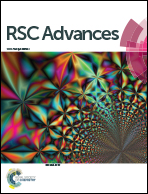Nanoparticles in sonodynamic therapy: state of the art review
Abstract
Sonodynamic therapy (SDT) is a novel therapeutic platform that involves a combination of low-intensity ultrasound and special bioagents called sonosensitizers. The application of nanoparticle technology substantially alters the concepts of traditional SDT. It has great potential to address many shortcomings which frequently trouble the clinical use of SDT, and paves the way for more effective yet safer therapeutic options. In this review, we systematically describe and compare the different individual types of nanoparticle that are being developed for SDT. Recent advances in the use of nanoparticles as sonosensitizers themselves or as carriers for sonosensitizer delivery are highlighted. Furthermore, potential limitations and future perspectives are also presented.


 Please wait while we load your content...
Please wait while we load your content...